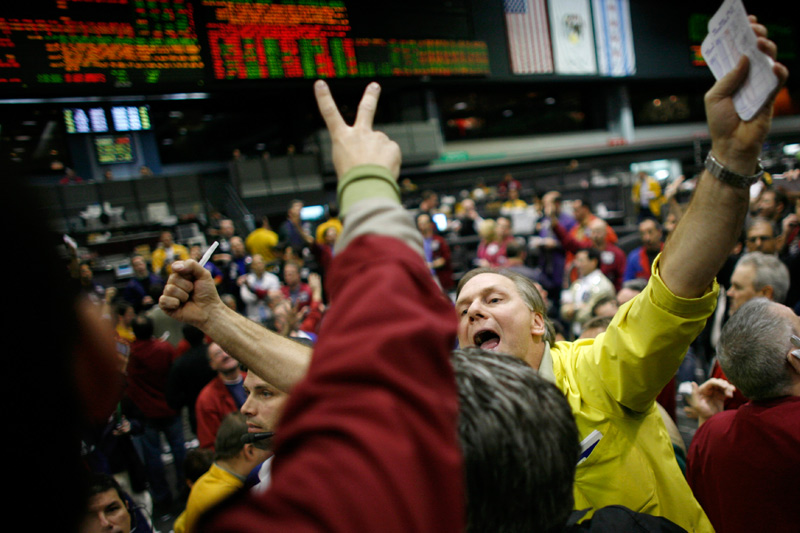By Emma Thomasson
BERLIN (Reuters) - Increasingly erratic weather is driving European clothing retailers to buy goods more often and closer to home, rather than relying on seasonal collections sourced months in advance.
Global fashion chains such as Inditex and Hennes & Mauritz have pioneered a model of regularly changing ranges, often dealing directly with factories to cut down delivery times and ensure a steady supply of new garments.
Now others, from mid-market Marks & Spencer to high-end Hugo Boss, are following suit, accepting the added costs and complexity in part to help reduce the risk that unseasonable weather leaves them with piles of unsold stock.
"Coping with unexpected weather will, with global warming, get increasingly important for fashion retailers," said Kantar Retail analyst Bryan Roberts. "Unless you are very quick, or very big, it is going to be a problem."
An unusually warm September and October in Europe has hit sales of big-ticket, high-margin winter garments such as coats and boots by chains including Gerry Weber, IC Group Marks & Spencer (M&S), Next and SuperGroup.
And this has been no one off.
Thirteen of the fourteen warmest years since records began in the 19th century have been in the 21st century and this year is on track to eclipse 2010 as the hottest, according to the U.S. National Aeronautics and Space Administration (NASA).
Best able to cope have been the likes of Zara-owner Inditex and Primark which offer a rolling supply of new styles.
"The key is to not have items in the storeroom and to have the capacity to decide to produce items at the last minute," an Inditex spokesman said.
The Spanish group, the world's biggest fashion chain, orders tens or hundreds of thousands of items with lead times of a few weeks from suppliers closer to home rather than the millions that many rivals order from Asia six months in advance.
Many clothing retailers flocked to Asian suppliers in recent years to take advantage of low labour costs, leaving them more exposed to longer delivery times and potentially having to discount unsold stock.
Discount chain Primark has the best of both worlds -- basic garments are produced in Asia with a lead time of about 90 days, while "fast fashion" is made in Turkey or eastern Europe.
About 10 percent of lines in its stores are brand new each week, with stock turning over six times a season versus an average of two times for most rivals. That helps the chain avoid the need for seasonal sales, only discounting particular items if they don't sell well.
"The store manager is responsible for the reordering and the mix that you see in store. Replenishment for the warehouses is on a daily basis," John Bason, chief financial officer of Primark parent Associated British Foods, told Reuters.
Primark's sales and profits both rose by more than 10 percent in the first four weeks of its fiscal year that started Sept. 14.
FLEXIBILITY AT A COST
Buying ranges more often and closer to home comes at a cost, however, and that is heavier for smaller retailers that cannot offer manufacturers the huge volumes of their global competitors. These chains are often focused on a single market, making them more exposed to volatile local weather conditions.
Next, Britain's No.2 clothing retailer, last month cut its full-year profit forecast by 25 million pounds ($39 million), blaming unusually warm weather, while larger rival M&S said the mild September knocked about 2.5 percent off its non-food sales.
Such hefty costs are leading more retailers to look at improving their supply chains, even if it adds to overheads.
M&S, for example, says it is working to increase the proportion of stock it sources direct from factories, rather than buying agents, to 60 percent from the current 25 percent.
"When you have got that direct contact with a supplier you can keep contracts more open to buy easier," said Chief Executive Marc Bolland.
Hugo Boss, meanwhile, is shifting from two pre-order seasons to four and increasing monthly theme-orientated deliveries. Responding to recent mild weather, it has given more prominence to lighter garments in its stores, but says it has not made significant changes to its range.
"This has been so far a difficult season for selling a heavy winter coat or a down jacket, in Europe at least," said Chief Financial Officer Mark Langer. "But you know something? If the weather is better, then sell something else."
(1 US dollar = 0.6395 British pound)
(Additional reporting by Anna Ringstrom in Stockholm, Sarah Morris in Madrid and James Davey in London; Editing by Mark Potter)
